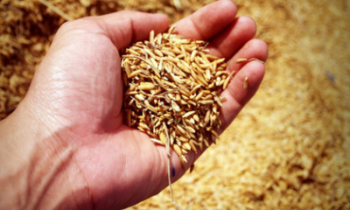 Deep in the bowels of an icy mountain on an island above the Arctic Circle between Norway and the North Pole lies a resource of vital importance for the future of humankind. It’s not coal, oil or precious minerals, but seeds.
Deep in the bowels of an icy mountain on an island above the Arctic Circle between Norway and the North Pole lies a resource of vital importance for the future of humankind. It’s not coal, oil or precious minerals, but seeds.
Millions of these tiny brown specks, from more than 930,000 varieties of food crops, are stored in the Global Seed Vault on Spitsbergen, part of Norway’s Svalbard archipelago. It is essentially a huge safety deposit box, holding the world’s largest collection of agricultural biodiversity. “Inside this building is 13,000 years of agricultural history,” says Brian Lainoff, lead partnerships coordinator of the Crop Trust, which manages the vault, as he hauls open the huge steel door leading inside the mountain.
It would be difficult to find a place more remote than the icy wilderness of Svalbard. It is the farthest north you can fly on a commercial airline, and apart from the nearby town of Longyearbyen, it is a vast white expanse of frozen emptiness.
The Global Seed Vault has been dubbed the “doomsday” vault, which conjures up an image of a reserve of seeds for use in case of an apocalyptic event or a global catastrophe. But it is the much smaller, localized destruction and threats facing gene banks all over the world that the vault was designed to protect against—and it’s why the vault was opened in February, when TIME visited.
On this occasion, samples from India, Pakistan and Mexico were being deposited alongside seeds from Syria, many of whose citizens are living through their own apocalypse. “There are big and small doomsdays going on around the world every day. Genetic material is being lost all over the globe,” says Marie Haga, executive director of the Crop Trust. This past winter offered the gene bank a chance to redress the balance.
Near the entrance to the facility, a rectangular wedge of concrete that juts out starkly against the snowy landscape, the doomsday nickname seems eerily apt. It was precisely for its remoteness that Svalbard was chosen as the location of the vault. “It is away from the places on earth where you have war and terror, everything maybe you are afraid of in other places. It is situated in a safe place,” says Bente Naeverdal, a property manager who oversees the day-to-day operation of the vault.
(organic consumers)
